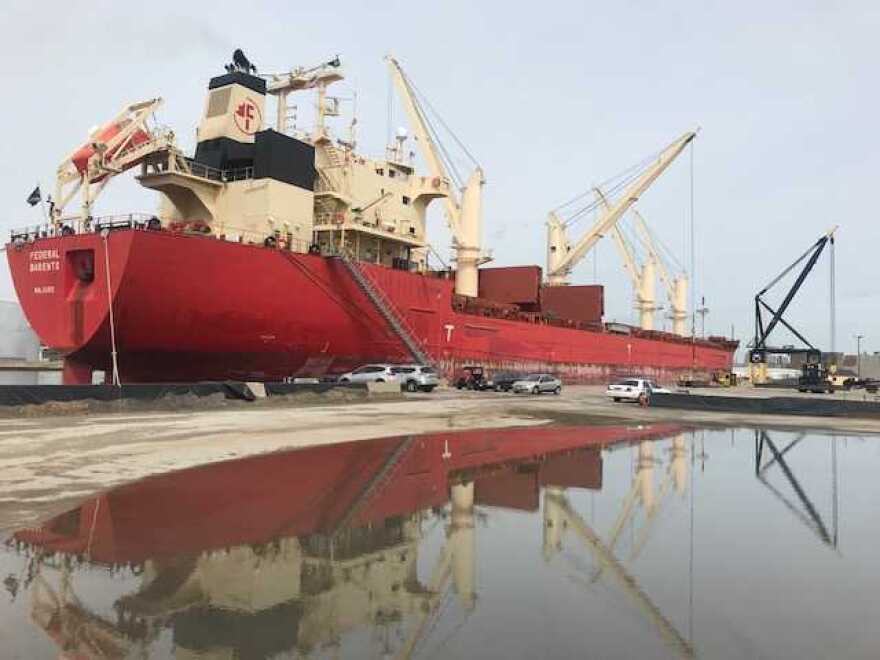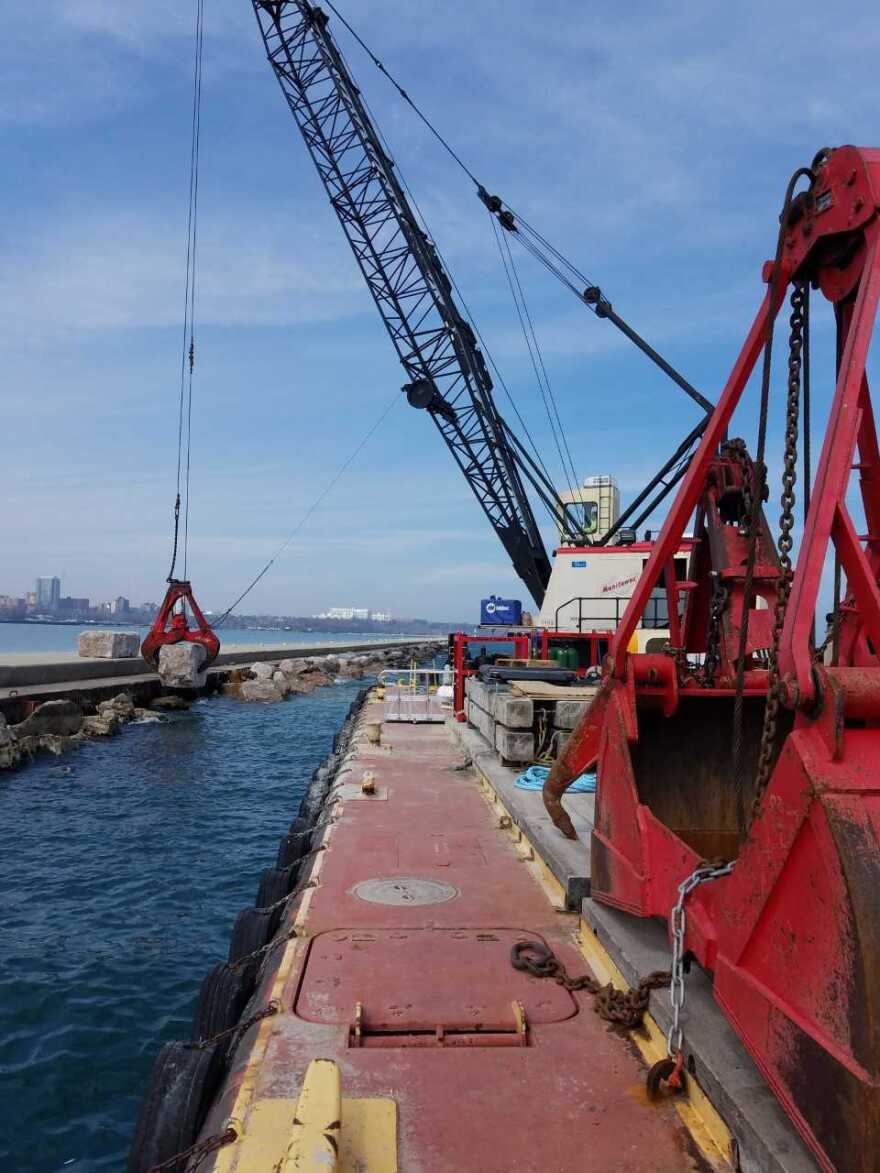A Bubbler Talk listener was curious about Milwaukee's breakwater, wondering where the rocks came from, and how they ended up standing in the middle of the harbor. WUWM Environmental Reporter Susan Bence explored the subject for this week's segment.
To kick off our sixth season of Bubbler Talk, Susan turned to Larry Sullivan, chief engineer with Milwaukee’s Port Authority. She asked him about the history of the breakwater structure.
“It was built by the federal government to create a harbor of refuge, for boats to get away from the storm,” Sullivan says.

The breakwater, also referred to as a breakwall, was built in stages. Construction on the north end, near McKinley Park, started in 1881. Eventually, the breakwater grew. Today, portions stretch as far south as Bay View.

The breakwall not only protects ships in the city's harbor. Sullivan says the structure also protects valuable real estate along the lakefront, including "maybe $1 billion worth of infrastructure...the sewage treatment plant, Summerfest (and) the Art Museum."
The U.S. Army Corps of Engineers is responsible for breakwater systems. Chief of Operations and Maintenance Bob Stanick oversees the Lake Michigan area.
“The structures are here to assist with commercial navigation, getting commerce from place to place. That’s basically what the Corps does: making sure the shippers can do what they need to do," Stanick says.
The structure has evolved over decades -- out of necessity. In recent years, crews started adding rocks to help protect the sections of the concrete-reinforced wall, which are most buffeted by waves. Smaller rocks are placed on the bottom. Boulders that can weigh up to 10 tons are added to the top.

The stones come from quarries as far away as Wausau in Marathon County, and as near as Sussex in Waukesha County.
In 2014, the Corps experimented, when a section of Milwaukee's breakwater was due for repair. Working with UW-Milwaukee's School of Freshwater Sciences, Corps engineers redesigned a 500-foot section to strategically insert smaller rocks among the giant ones. It was part of an effort to create habitat for both fish and the smaller creatures they feed on. Stanick says the experiment went well, and could factor into future breakwater projects.
Milwaukee's system represents four out of 13 miles of breakwater and other structures around Lake Michigan. Stanick says breakwaters are in constant need of attention.
“Concrete doesn’t last forever, and a lot of these structures were built in the 1930s," Stanick says.
But Stanick says there’s more than age at play. Waves can have their way with the manmade structures.
"There was a stone in Sheboygan on the north breakwall that was about eight tons, and a wave picked that up and put it on top of the breakwall. That’s a lot of force," Stanick says.

A 10-person mobile maintenance team tends to the breakwaters that are the most in need of repair. The team operates two tugboats, a crane barge, and a couple of additional barges.
“Usually around April 1, they leave Kewaunee Harbor, where they winter over, and usually don’t get back until some time in November,” Stanick says.
The floating team must be fearless and precise.
“The crane operator actually picks each rock out of the barge, specifically looking at the hole he has to fill. He'll spend time moving it around. The idea is to get three sides of the stone touching other stone so it really locks into place, because that wave energy is incredibly powerful,” Stanick says.

Have a question you'd like WUWM to answer? Submit your query below.
_







